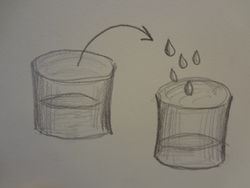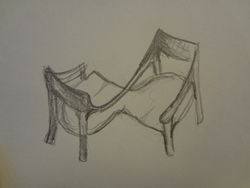atom11:Healy
From student
(Difference between revisions)
(→Suggested References) |
(→Core Feedback) |
||
| (15 intermediate revisions by one user not shown) | |||
| Line 1: | Line 1: | ||
| + | __NOTOC__ | ||
[[Atom11:connections|'''Go Back''']] | [[Atom11:connections|'''Go Back''']] | ||
| + | |||
| + | <div style="float:left; margin-left:150px; width: 790px; overflow:hidden; " > | ||
| + | ===<font color= "#247705">Patrick Healy</font>=== | ||
| + | Senior Lecturer of Aesthetics and the Philosophy of Science, [http://www.delftschoolofdesign.eu/staff Delft School of Design] | ||
| + | ---- | ||
| + | |||
| + | <div style="float:left; margin-left:0px; width: 100px; overflow:hidden; " > | ||
| + | [[File:PatrickHealy.jpg|100px]] | ||
| + | </div> | ||
| + | </div> | ||
<div style="float:left; margin-left:150px; width: 790px; overflow:hidden; " > | <div style="float:left; margin-left:150px; width: 790px; overflow:hidden; " > | ||
| Line 8: | Line 19: | ||
Libeskind’s Jewish Museum succeeds in this respect because the concept of the design is so closely related to way in which the Jews were living in Berlin at the time they were taken from their homes. In this way, Libeskind validates his concept for the form of the building and maps the horror of events in one gesture. | Libeskind’s Jewish Museum succeeds in this respect because the concept of the design is so closely related to way in which the Jews were living in Berlin at the time they were taken from their homes. In this way, Libeskind validates his concept for the form of the building and maps the horror of events in one gesture. | ||
| + | |||
| + | '''"the most profound experience of intimacy is that we are born into well being"''' | ||
| − | |||
</div> | </div> | ||
<br> | <br> | ||
| Line 22: | Line 34: | ||
===<font color= "#247705">Suggested References</font>=== | ===<font color= "#247705">Suggested References</font>=== | ||
---- | ---- | ||
| + | Professor Healy was kind to recommend these works to us, and will we continue to read and incorporate our findings into our projects. | ||
''The Poetics of Space'' by Gaston Bachelard | ''The Poetics of Space'' by Gaston Bachelard | ||
<br>(to provide a topological analysis of intimacy) | <br>(to provide a topological analysis of intimacy) | ||
| − | ''Landscape and Memory'' by Schama | + | ''Landscape and Memory'' by Simon Schama |
''THe Hidden Dimension'' by T.D. Hall | ''THe Hidden Dimension'' by T.D. Hall | ||
<br>(A look into the distances that separate people) | <br>(A look into the distances that separate people) | ||
| + | [http://http://www.footprintjournal.org/issues/show/architecture-and-phenomenology Footprint Online Journal] - Article on Japanese Gardens | ||
| Line 38: | Line 52: | ||
===<font color= "#247705">Anecdotes</font>=== | ===<font color= "#247705">Anecdotes</font>=== | ||
---- | ---- | ||
| − | |||
| − | |||
[[File:Water to water.JPG|250px]] | [[File:Water to water.JPG|250px]] | ||
| Line 52: | Line 64: | ||
</div> | </div> | ||
<div style="float:left; margin-left:20px; width: 250px; overflow:hidden; " > | <div style="float:left; margin-left:20px; width: 250px; overflow:hidden; " > | ||
| + | |||
===<font color= "#247705">Reactions</font>=== | ===<font color= "#247705">Reactions</font>=== | ||
---- | ---- | ||
Abstraction or not, the research methodology we have employed has resulted in a database of information from which we can draw certain concrete conclusions about how humans experience their environment. The question of an “extra architectural concept” will be an integral part of how we proceed in Phase II.</div> | Abstraction or not, the research methodology we have employed has resulted in a database of information from which we can draw certain concrete conclusions about how humans experience their environment. The question of an “extra architectural concept” will be an integral part of how we proceed in Phase II.</div> | ||
</div> | </div> | ||
Latest revision as of 14:49, 17 October 2011


